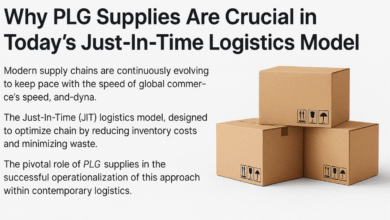A Reflective Journey Through Visa Provisioning Service: Unpacking the Digital Wallet Mystery

I remember the first time I spotted “Visa Provisioning Service $0” on my bank statement, nestled among coffee runs and grocery bills, like an uninvited guest at a familiar party. It was late, the kind of evening where the glow of my laptop screen felt like a confession booth, and there it was—a line item that didn’t fit. At first, I thought it was a mistake, a glitch in the matrix of my finances, but as I dug deeper, I realized it was a window into something bigger: the invisible dance of modern digital payments, a world where my phone and bank were whispering secrets I didn’t fully understand.
The Hidden Handshake: What Is Visa Provisioning Service?
Let’s start with the basics, though I’ll admit, even now, it feels like trying to describe a dream. Visa Provisioning Service, as I’ve come to understand, is the behind-the-scenes work that happens when you add your credit or debit card to a digital wallet—think Google Pay, Apple Pay, or Samsung Pay. It’s not a charge, at least not in the traditional sense; more often, it’s a $0 entry, a placeholder, a digital nod saying, “Yes, we see you, and we’re ready.” This process, called tokenization, swaps your real card number for a unique digital token, a kind of alias that keeps your sensitive data safe from prying eyes. I remember reading about it on sites like Quora and Wealthy Nickel, where users shared similar stories of confusion, and it clicked: this wasn’t a random error but a standard step in mobile payment provisioning. But what does it mean on your statement? For me, it felt like a breadcrumb, a clue left by the financial system, hinting at how our money moves in this digital age. It’s not just about paying for coffee with a tap; it’s about the infrastructure, the quiet agreements between banks, card networks, and our devices. I found myself wondering, is this the future we signed up for, where every tap leaves a trace, even if it’s just a zero-dollar whisper?
Why Does It Show Up, Even When I Didn’t Buy Anything?
Here’s where it gets interesting, and a little unsettling. I noticed it appeared on days when I hadn’t shopped, like a ghost transaction haunting my account. Digging into forums, like a Reddit thread from a few years back, I learned it could happen during setup, updates, or even when merchants verify your card’s activity. It’s like the system is doing a health check, ensuring your card is alive and kicking, ready for the next tap. This token provision charge, as some call it, isn’t about spending; it’s about preparing, a kind of digital warm-up. I remember thinking, what if I didn’t ask for this? What if my phone, in its quiet wisdom, decided to sync with Visa Provisioning without me noticing? It’s a bit like finding an extra guest at dinner, someone you didn’t invite but who’s already settled in. For Android users, it might pop up more often, given the open ecosystem, and I’ve seen mentions of Visa Provisioning on Mastercard statements too, though less frequently. It’s a reminder, I suppose, that our financial lives are increasingly shared, not just with banks but with the tech giants behind our screens.
The Unease of the Unknown: Is Visa Provisioning Safe?
Safety, now there’s a word that carries weight, especially when it comes to money. At first, I worried—was this a sign of fraud, a crack in the armor of my financial security? But the more I read, the more it seemed like Visa Provisioning Service was designed to protect, not harm. Sites like GlobalBanks and developer.visa.com painted a picture of a system using machine learning to combat token fraud, replacing your 16-digit PAN with a random sequence, a kind of digital disguise. It’s part of how Visa Provisioning and digital wallets work together, a shield against the bad actors lurking in the shadows of e-commerce and contactless payments. Still, I couldn’t shake the unease. What many don’t realize is that this process involves sharing data—your card details, your habits, maybe even your location if linked to a wallet. It’s a trade-off, I suppose, convenience for privacy, and I found myself wondering, is this worth it? The Visa Provisioning Intelligence, launched a couple of years ago, aims to predict fraud, but does that mean my data is safer, or just more scrutinized? I think back to those late-night scrolls through forums, where users debated, “Is Visa Provisioning safe?” and the answers were as varied as the colors in a sunset—some saw it as a lifeline, others as a leash.
A Deeper Dive: How Does Token Provisioning Work?
Let’s get technical for a moment, though I’ll try to keep it human. Token provisioning, at its core, is about replacing your card number with a token, a unique identifier that only works within the ecosystem of your chosen wallet. It’s like giving your bank a secret code, one that only they and your phone understand. I read on developer.visa.com about APIs that handle this, passing encrypted payloads to Apple, Google, and Samsung Pay, streamlining the process. It’s fascinating, really, how this invisible handshake happens—your device talks to your bank, your bank talks to Visa, and suddenly, your card is ready for a tap at the coffee shop. But how does it feel, knowing this dance is happening without you seeing the steps? For me, it’s a mix of awe and anxiety. I remember setting up Google Pay on my Android, watching the screen load, and thinking, is this it? Is this the moment my card becomes part of something bigger? The charge, if it shows, is usually gone within a week, a fleeting visitor, but it leaves a mark, a question: how much of my financial life is now automated, out of my hands?
Can You Disable It, and Should You?
Here’s where I hit a wall, and maybe you will too. Can you disable Visa Provisioning? From what I’ve gathered, it’s not always straightforward. Some banks let you opt out of tokenization, but it’s like turning off a safety feature on your car—you might save a bit of hassle, but at what cost? I found mentions of contacting your bank, especially for Android devices, to see if they can limit mobile payment provisioning, but it’s not a universal option. And should you? Well, that’s personal. If you’re like me, wary of data sharing, you might want to, but if you love the ease of tapping to pay, maybe not. It’s a balance, I think, between control and convenience, and I’m still figuring out where I land.
What Happens If You See a Charge?
Now, let’s say you see Visa Provisioning Service and it’s not $0—it’s a debit, a real charge. That’s when the heart skips, isn’t it? I remember reading about users on my FICO forums, puzzled by denied $0 charges, wondering if someone tried to use their card. The truth, it seems, is usually benign—a merchant checking your card’s validity, a system hiccup. But if it persists, it’s worth calling your bank, especially if you’re seeing visa provisioning service debit entries you didn’t expect. It’s like finding a crack in the wall—you want to know if it’s just cosmetic or something deeper.
A Metaphor for Trust: What Does It All Mean?
As I sit here, reflecting, I see Visa Provisioning Service as a metaphor for our relationship with digital finance. It’s a small entry, a $0 charge, but it’s also a symbol of trust—of handing over a piece of ourselves to systems we can’t fully see. It’s like planting a seed, hoping it grows into something safe, something useful, but always wondering if the roots will hold. For me, it’s a reminder to check, to question, to understand, even if the answers aren’t always clear. And maybe that’s okay—maybe the mystery is part of the journey, a prompt to engage, to learn, to trust, but with eyes wide open. Image Prompts for Visualization
FAQs: Unraveling the Mystery
Here are some questions you might have.
What does Visa Provisioning Service mean on my statement?
It’s usually about adding your card to a digital wallet, like Google Pay, using tokenization to keep your details safe. If it’s $0, it’s likely just a verification, but I get why it feels odd seeing it there.
Is a $0 charge from Visa Provisioning Service normal?
Yes, it seems normal—it’s often a placeholder, not a real charge, disappearing within a week. But if you’re unsure, checking with your bank can ease the mind.
Why does Visa Provisioning appear even if I didn’t buy anything?
It might be your device or bank setting up for mobile payments, like a system check. It’s part of how token provisioning works, ensuring your card’s ready for digital wallets.
Can I remove Visa Provisioning Service from my debit card?
It’s tricky—some banks let you opt out, especially for Android, but it might limit mobile payment options. I’d call your bank to see if it’s possible, and decide if convenience is worth it.
What’s the link between Visa Provisioning and mobile wallets like Google Pay?
They’re intertwined—Visa Provisioning helps set up your card in wallets, using tokens for security. It’s like the backstage pass for tap-to-pay, making it seamless but invisible.
Is Visa Provisioning Service a sign of fraud?
Research suggests no, it’s usually safe, part of anti-fraud measures. But if it feels off, especially with charges, contact your bank—it’s better to be safe.
How does token provisioning work with digital banking?
It replaces your card number with a token, a unique code for secure transactions. It’s like giving your bank a secret handshake, used in e-commerce and contactless payments.
What happens after Visa Provisioning appears on my account?
Usually, it’s just a blip, disappearing soon, but it means your card’s been prepped for digital use. If it sticks around or charges, it’s worth a call to your bank.
Can Visa Provisioning be turned off on Android devices?
It might be possible, depending on your bank, but it could limit mobile wallet features. I’d check with them—it’s a personal choice between privacy and convenience.
Does Visa Provisioning Service affect my Mastercard too?
It can, though less common—some systems use similar provisioning for Mastercard, especially in digital wallets. If you see it, it’s likely the same tokenization process, but confirm with your bank.
What is visa provisioning service on bank statement?
It’s usually a $0 charge showing your card was added to a digital wallet like Google Pay or Apple Pay using tokenization for security.
What is token provision on my debit card?
It means your debit card was securely linked to a mobile wallet, replacing your real card number with a safe digital token.
How to turn off visa provisioning service?
You’ll need to contact your bank—some allow disabling mobile wallet provisioning, but it might limit features like tap-to-pay.
What is token provision charge?
It’s typically a $0 verification when setting up digital payments—not a real charge, just a background security check.
Does amazon use visa provisioning service?
Yes, Amazon can use it when you save or update a card, especially if you use mobile wallets—it’s part of their secure setup.




